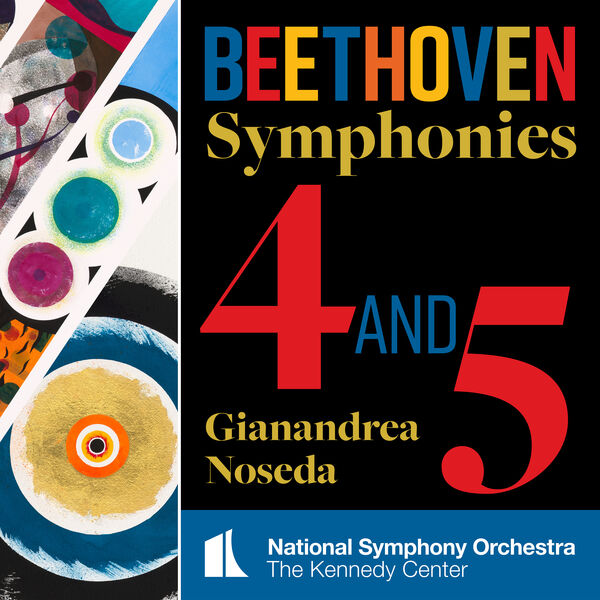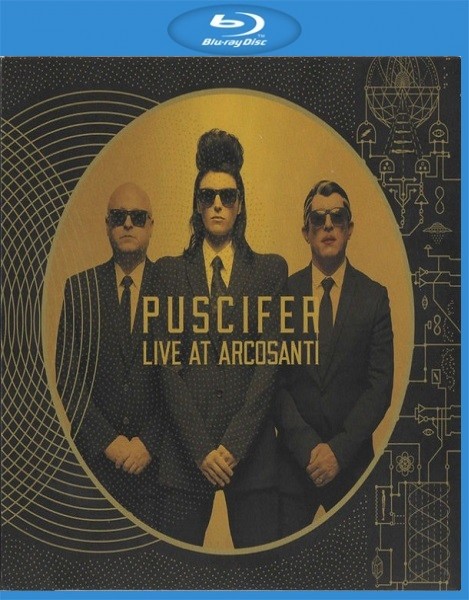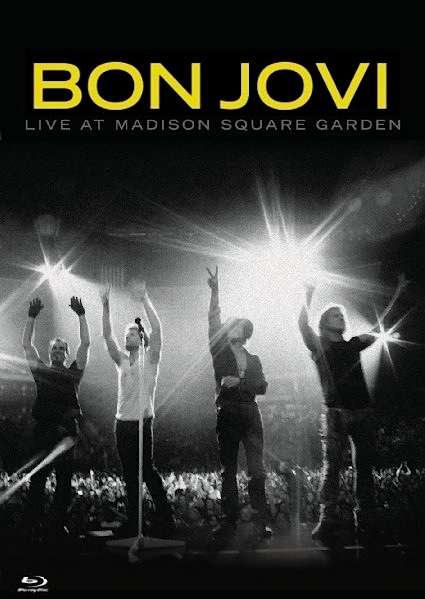
National Symphony Orchestra, Kennedy Center & Gianandrea Noseda – Beethoven: Symphonies Nos 4 & 5 (2023)
FLAC (tracks) 24 bit/192 kHz | Time – 01:02:23 minutes | 2,00 GB | Genre: Classical
Studio Masters, Official Digital Download | Front Cover | © National Symphony Orchestra
Two symphonies from Beethoven’s so-called ‘Heroic’ period—No 4 completed in 1806 and the supremely defiant No 5 begun in the same year and completed two years later.
Symphony No 4 in B flat major Op 60 (1806)
Beethoven’s career as a composer spanned some 40 years, from his youthful essays to the last string quartets. His output, however, was not evenly distributed over those decades. There were years when he composed little or nothing at all; at other times he wrote incredible amounts of great music over a remarkably short period of time. During such periods, it is hard to reconcile Beethoven’s extreme speed with the usual image of the composer toiling endlessly over his sketches.
1806 was one of the most prolific years in Beethoven’s life. He completed his three Razumovsky quartets, the fourth piano concerto, the fourth symphony, and the violin voncerto. He also started work on what would later become the fifth symphony.
The 36-year-old Beethoven was in the middle of his so-called ‘heroic’ period, shortly after the ‘Eroica’ and just before the no-less-heroic fifth. The fourth has traditionally been seen as a kind of respite between these two mighty works, in accordance with the old theory that opposed the dramatic ‘odd-numbered’ symphonies to the more lyrical ‘even-numbered’ ones.
As an experiment, let us forget this theory for a moment. We will then find that the fourth is animated by the same incessant flow of energy and the same irresistible pull to move ahead as its more tempestuous companions. It is just as perfect a representative of the ‘heroic period’ as any other work. The emotions expressed may be lighter and less tragic, but they are expressed with the same force throughout.
The slow introduction to the first movement is certainly one of the most suspenseful Beethoven ever wrote. The idea of starting a B flat major symphony with a slow-moving unison theme in B flat minor may have come from Haydn’s Symphony No 98, but the polarity is much greater in Beethoven, whose introduction is full of a sense of mystery that was entirely new in music. One finds it hard to believe that Haydn had written his London symphonies only a decade earlier and was still alive in 1806!
Slow introductions are usually linked to the subsequent Allegros by means of some transition that builds a bridge between the two tempos. In Beethoven’s fourth, there is a clear separation instead of a bridge. A drastic shift of keys and a sudden general rest bring the music to a virtual standstill before the energetic Allegro vivace is launched. Now there will hardly be a moment of pause until the end of the movement. The concise exposition begins with a brisk and vibrant theme, and even the more lyrical moments are full of motion and excitement.
The development section employs one of Beethoven’s favorite musical techniques, namely thematic fragmentation. The first theme is ‘decomposed’ almost to its atoms; for a while, it receives a new lyrical counter-melody that is, however, soon brushed aside by a tutti outburst. The recapitulation is prepared by a long tremolo on the kettledrum, over which the strings gradually put the thematic ‘atoms’ back together for the triumphant return of the theme.
The second movement is the only large-scale lyrical Adagio in a Beethoven symphony before the ninth. In the fourth symphony, Beethoven unfolds a beautiful cantabile (‘singing’) theme over a characteristic rhythmic accompaniment that eventually rises to the status of a theme in its own right. The cantabile theme returns several times, in a more and more ornamented form, its appearances separated by some rather powerful statements. The movement ends with a timpani solo followed by two concluding orchestral chords.
The third movement is a scherzo, although Beethoven didn’t use that word as a title. The music abounds in playful elements and a general mood of exuberant joy. The Trio moves in a slower tempo and has a simpler melody; it is based on the juxtaposition of the orchestra’s wind and string sections. Beethoven added an interesting twist to the usual scherzo form here: he expanded on the standard form (Scherzo – Trio – Scherzo) by means of a second appearance of the Trio and a third Scherzo statement.
The fourth-movement finale, marked ‘Allegro ma non troppo’, begins with a theme in perpetual sixteenth-note motion; the flow of the sixteenth is only briefly interrupted by melodic episodes. This movement is light in tone and cheerful in spirit. Like the slow introduction to the first movement, the finale also shows how much Beethoven had learned from Haydn. But, once again, most of the music sounds like no one but Beethoven. The repeated and unresolved dissonances at the end of the exposition, sound rather close to a similar passage in the first movement of the ‘Eroica’. Also, Haydn probably wouldn’t have entrusted the return of the perpetual-motion theme to the solo bassoon, in what is one of the most difficult passages for the instrument in the classical repertoire. One feels that this music could go on ad infinitum, but it is suddenly cut short by a hesitant, slower rendition of the main theme in the violins, continued by the bassoons, and abruptly ended by a few energetic chords played by the whole orchestra.
Symphony No 5 in C minor Op 67 (1808)
‘The reviewer has before him one of the most important works by the master whose pre-eminence as an instrumental composer it is doubtful that anybody would now dispute …’ These words were written by E T A Hoffmann (1776-1822), writer and composer, in 1810, a year and a half after the first performance (which he had not heard), in a review of the score of Beethoven’s fifth symphony. Although writings about this work would now fill a small library, few authors in the past 198 years have equalled Hoffmann’s sensitivity, and his ability to combine a poet’s imagination with the thoroughness of a musical scholar.
Hoffmann immediately understood the significance of the symphony’s opening motif, the famous ta-ta-ta-TA: ‘Nothing could be simpler than the main idea of the opening Allegro, consisting of only two bars and initially in unison, so that the listener is not even certain of the key. The mood of the anxious, restless yearning created by this subject is heightened even further by the melodious secondary theme.’ The fermata, the long-held note at the end of the first extended phrase, gives, according to Hoffmann, ‘presentiments of unknown mysteries’.
Everything in the first movement is, one way or another, derived from that opening ta-ta-ta-TA. The rhythm is almost always present in the bass or in the treble, in its original form or with modifications. Whether or not this theme represents ‘Fate pounding at the portal’, as Beethoven is supposed to have said, the dramatic tension of the music and the heroic struggle it portrays cannot be missed.
In the second-movement, Andante con moto, two themes alternate in a kind of ‘double variation’ form. A gentle opening melody is followed by loud military fanfares, and the movement is based largely on the transitions back and forth between these two kinds of material. In the course of the variations, the character of the first theme changes from lyrical to mysterious.
The mood becomes dark again in the third-movement, Allegro. Beethoven did not use the title ‘Scherzo’ here, although it is obviously one of the fast movements in 3/4 time with a contrasting middle section that he elsewhere called ‘scherzi’ (jokes). This time, however, we feel a chilly wind blowing as the cellos and double basses begin the pianissimo theme of the movement. Soon a variant of the first movement’s ta-ta-ta-TA motif appears on the horns; it sounds even more austere now that all four notes have the same pitch (that is, the last note does not drop a third as it did in the first movement). The Trio, which starts out as a fugue with an agile theme played by the cellos and double basses, provides some comic relief for a moment, but then a most extraordinary thing happens. The theme of the first section returns, but the strings play pizzicato (‘with the strings plucked’) and the legato (‘continuous’) melody is broken up into mysterious-sounding staccato notes. If the first version of the theme made a chilly impression, this time it is definitely freezing, and the recapitulation is followed by a section characterized by the deepest despair music has ever expressed. We hear a pianissimo kettledrum solo over the long-held notes of the strings; against this thumping background, a violin theme (related to the first theme of the movement) gradually emerges and rises higher and higher against the insistent ostinato in basses and timpani. In one of the most fantastic ‘darkness-to-light’ transitions in the orchestral literature, we reach, after 50 measures of suspense and a stunning crescendo, the glorious Allegro in C major which proclaims the victory at the end of a long battle.
Piccolo, contrabassoon, and three trombones (instruments Beethoven had never used in his first four symphonies) join the orchestra for this exuberant celebration, in a movement in which their various themes follow one another with a naturalness and inevitability that is one of the greatest miracles of Beethoven’s music. The movement follows the traditional sonata pattern of exposition, development, and recapitulation, but between the last two, another surprise awaits us. (It is another miracle that after a thousand hearings, it still strikes us as a surprise.) The last section of the third movement returns, and the transition from darkness to light is enacted all over again. However, nothing is repeated literally; the orchestration is new, the ‘darkness’ is made less gloomy by the more melodic woodwind parts. The transition is new as well: the ‘chilly’ string melody is totally absent, and we reach the triumphant Allegro much faster and more easily than the first time. The celebrated British musical commentator, Donald Francis Tovey (1875-1940) wrote very eloquently about the effect of this passage:
Beethoven recalls the third movement as a memory which we know for a fact but can no longer understand: There is now a note of self-pity, for which we had no leisure when the terror was upon our souls: the depth and the darkness are alike absent, and in the dry light of the day we cannot remember our fears of the unknown. And so the triumph resumes its progress and enlarges its range until it reaches its appointed end.
That ‘appointed end’, the Presto coda with its 54 measures of C major chords, has raised, we must say, a few eyebrows. Yet it seems that a shorter coda would not have been enough to balance out the enormous tensions of the symphony. Like an airplane that, after landing, runs on the ground for a long time before coming to a complete stop, Beethoven’s fifth ends gradually; after the thematic material has disappeared, the music still continues with a bare restatement of the C major tonality. Finally, even the C major chord goes away, replaced by a single unison C that marks the final arrival.
Tracklist:
1. National Symphony Orchestra, Kennedy Center & Gianandrea Noseda – Beethoven: Symphony No. 4 in B-Flat Major, Op. 60: I. Adagio – Allegro vivace (10:34)
2. National Symphony Orchestra, Kennedy Center & Gianandrea Noseda – Beethoven: Symphony No. 4 in B-Flat Major, Op. 60: II. Adagio (09:25)
3. National Symphony Orchestra, Kennedy Center & Gianandrea Noseda – Beethoven: Symphony No. 4 in B-Flat Major, Op. 60: III. Menuetto. Allegro vivace (05:17)
4. National Symphony Orchestra, Kennedy Center & Gianandrea Noseda – Beethoven: Symphony No. 4 in B-Flat Major, Op. 60: IV. Allegro ma non troppo (06:26)
5. National Symphony Orchestra, Kennedy Center & Gianandrea Noseda – Beethoven: Symphony No. 5 in C Minor, Op. 67: I. Allegro con brio (06:40)
6. National Symphony Orchestra, Kennedy Center & Gianandrea Noseda – Beethoven: Symphony No. 5 in C Minor, Op. 67: II. Andante con moto (08:49)
7. National Symphony Orchestra, Kennedy Center & Gianandrea Noseda – Beethoven: Symphony No. 5 in C Minor, Op. 67: III. Scherzo. Allegro (04:41)
8. National Symphony Orchestra, Kennedy Center & Gianandrea Noseda – Beethoven: Symphony No. 5 in C Minor, Op. 67: IV. Allegro (10:28)
Download:
https://xubster.com/0wpuomt1kvay/Nati0nalSymph0ny0rchestraKennedyCenterGianandreaN0sedaBeeth0venSymph0niesN0s45202324192.part2.rar.html
https://xubster.com/umlf9vetkvdu/Nati0nalSymph0ny0rchestraKennedyCenterGianandreaN0sedaBeeth0venSymph0niesN0s45202324192.part3.rar.html
https://hexload.com/h97e1vty6k01/Nati0nalSymph0ny0rchestraKennedyCenterGianandreaN0sedaBeeth0venSymph0niesN0s45202324192.part1.rar
https://hexload.com/5sgc39d3600m/Nati0nalSymph0ny0rchestraKennedyCenterGianandreaN0sedaBeeth0venSymph0niesN0s45202324192.part2.rar
https://hexload.com/2e6kc5c72tlf/Nati0nalSymph0ny0rchestraKennedyCenterGianandreaN0sedaBeeth0venSymph0niesN0s45202324192.part3.rar






![William Shatner, Ben Folds, National Symphony Orchestra, Kennedy Center, Steven Reineke – So Fragile, So Blue (2024) [Official Digital Download 24bit/96kHz]](https://imghd.xyz/images/2024/04/18/sjuob0jojzqza_600.jpg)
![London Symphony Orchestra & Gianandrea Noseda – Prokofiev: Symphony No. 3 (2024) [Official Digital Download 24bit/192kHz]](https://imghd.xyz/images/2024/03/08/sfkz2204wmxfa_600.jpg)
![National Symphony Orchestra, Kennedy Center, Gianandrea Noseda – Beethoven: Symphonies Nos 1 & 3 (2022) [Official Digital Download 24bit/96kHz]](https://imghd.xyz/images/2022/10/21/s1tym2sxbx4sa_600.jpg)
![Gianandrea Noseda, National Symphony Orchestra, Kennedy Center, Camilla Tilling, Kelley O’Connor, Issachah Savage, Ryan McKinny, The Washington Chorus – Beethoven: The Complete Symphonies (2024) [Official Digital Download 24bit/192kHz]](https://imghd.xyz/images/2024/02/10/l7voyl86z34kb_600.jpg)
![Gianandrea Noseda, National Symphony Orchestra – Beethoven: Symphony No. 9 (2024) [Official Digital Download 24bit/192kHz]](https://imghd.xyz/images/2024/02/10/q1pd86rehaw8b_600.jpg)
![Gianandrea Noseda – Carlos Simon: Tales – A Folklore Symphony (2024) [Official Digital Download 24bit/44,1kHz]](https://imghd.xyz/images/2024/01/31/dwfbx5rbrbd2b_600.jpg)
![London Symphony Orchestra, Gianandrea Noseda – Tchaikovsky: Symphony No. 5 – Rimsky-Korsakov: Kitezh Suite (2022) [Official Digital Download 24bit/192kHz]](https://imghd.xyz/images/2022/12/08/o1f3r727d46db_600.jpg)
![Karen Geoghegan, BBC Philharmonic Orchestra, Gianandrea Noseda – Wolf-Ferrari: Orchestral Works (2009/2022) [Official Digital Download 24bit/96kHz]](https://imghd.xyz/images/2022/12/05/hkk31huotre4b_600.jpg)
![National Symphony Orchestra, Kennedy Center & Gianandrea Noseda – Beethoven: Symphonies Nos. 2 & 7 (2023) [Official Digital Download 24bit/192kHz]](https://imghd.xyz/images/2023/12/09/jc74hl3xccfvc_600.jpg)
![London Symphony Orchestra & Gianandrea Noseda – Prokofiev: Symphony No. 5 (2023) [Official Digital Download 24bit/192kHz]](https://imghd.xyz/images/2023/11/29/ty4y5ra4xbqxc_600.jpg)
![Gianandrea Noseda, National Symphony Orchestra, Kennedy Center – Beethoven: Symphonies Nos 6 & 8 (2023) [Official Digital Download 24bit/192kHz]](https://imghd.xyz/images/2023/11/19/cqnbwvu9un19a_600.jpg)
![Gianandrea Noseda – Beethoven Symphonies Nos 6 & 8 (2023) [24Bit-192kHz] FLAC [PMEDIA] ⭐️](https://imageurl.xyz/images/2023/10/26/GianandreaNosedaBeethovenSymphoniesNos68202324Bit192kHzFLACPMEDIA.jpg)
![National Symphony Orchestra – Conductor’s Gallery, Vol. 11: Piero Coppola, George Enescu (2023) [Official Digital Download 24bit/48kHz]](https://imghd.xyz/images/2023/09/12/k3sbfnfkrs4pa_600.jpg)
![National Symphony Orchestra – Conductor’s Gallery, Vol. 15: Sir Malcolm Sargent, Eduard van Beinum (2023) [Official Digital Download 24bit/48kHz]](https://imghd.xyz/images/2023/09/12/o09fdkc12xmva_600.jpg)
![National Symphony Orchestra, London Symphony Orchestra, Albert Coates – Conductor’s Gallery, Vol. 5: Albert Coates (2023) [Official Digital Download 24bit/48kHz]](https://imghd.xyz/images/2023/09/12/c1ixt8qot0xxc_600.jpg)
![National Symphony Orchestra, Kennedy Center & Gianandrea Noseda – George Walker: Five Sinfonias (2023) [Official Digital Download 24bit/192kHz]](https://imghd.xyz/images/2023/09/12/qhv4gz6r9l9jc_600.jpg)
![National Symphony Orchestra, Howard Mitchell – Shostakovich: Symphony No. 5 in D Minor, Op. 47 (1959) [Official Digital Download 24bit/192kHz]](https://imghd.xyz/images/2023/09/01/0886446030555_600.jpg)
![Seong-Jin Cho, London Symphony Orchestra, Gianandrea Noseda – Chopin – Piano Concerto No. 1; Ballades (2016) [Official Digital Download 24bit/96kHz]](https://imghd.xyz/images/2023/08/30/opwv6vu1tjwec_600814028d075a3cf8f.jpg)
![BBC Philharmonic, Gianandrea Noseda – Rachmaninov: Symphony No. 3 – Prince Rostislav – Caprice bohémien (2011) [Official Digital Download 24bit/96kHz]](https://imghd.xyz/images/2023/08/14/c2bh3nwfzllfb_600.jpg)
![BBC Philharmonic, Gianandrea Noseda – Rachmaninov: Symphony No. 2 – The Rock (2010) [Official Digital Download 24bit/96kHz]](https://imghd.xyz/images/2023/08/14/cudizitkm5ebc_600.jpg)
![BBC Philharmonic, Gianandrea Noseda – Rachmaninov: Symphony No. 1 – The Isle of the Dead – Youth Symphony (2008) [Official Digital Download 24bit/96kHz]](https://imghd.xyz/images/2023/08/14/d1ifkm9rh1xjb_600.jpg)
![National Symphony Orchestra & Gianandrea Noseda – Dvořák: Symphony No. 9 – Copland: Billy the Kid (2020) [Official Digital Download 24bit/96kHz]](https://imghd.xyz/images/2023/07/14/nhvjjcumm5cpb_600.jpg)
![Gianandrea Noseda, London Symphony Orchestra – Shostakovich: Symphonies Nos 6 & 15 (2023) [Official Digital Download 24bit/192kHz]](https://imghd.xyz/images/2023/07/03/z5mxf9yauhzqa_600.jpg)
![London Symphony Orchestra & Gianandrea Noseda – Tchaikovsky: Symphony No. 4 – Mussorgsky: Pictures at an Exhibition (2019) [Official Digital Download 24bit/96kHz]](https://imghd.xyz/images/2023/05/29/thkx7b1l2slya_600.jpg)
![London Symphony Orchestra, Gianandrea Noseda – Shostakovich: Symphony No. 7 (2022) [Official Digital Download 24bit/96kHz]](https://imghd.xyz/images/2022/02/28/vtk04zubo96hb_600.jpg)
![London Symphony Orchestra & Gianandrea Noseda – Shostakovich: Symphony No. 8 (2018) [Official Digital Download 24bit/96kHz]](https://imghd.xyz/images/2023/05/13/arzbflmyw7gzb_600.jpg)
![London Symphony Orchestra & Gianandrea Noseda – Shostakovich: Symphony No. 5 (2018) [Official Digital Download 24bit/96kHz]](https://imghd.xyz/images/2023/05/13/v6pcurt1cq5ea_600.jpg)
![London Symphony Orchestra & Gianandrea Noseda – Shostakovich: Symphony No. 4 (2019) [Official Digital Download 24bit/96kHz]](https://imghd.xyz/images/2023/05/13/h3hfuuhztcuqa_600.jpg)
![London Symphony Orchestra & Gianandrea Noseda – Shostakovich: Symphonies Nos. 9 & 10 (2021) [Official Digital Download 24bit/96kHz]](https://imghd.xyz/images/2023/05/13/bahioenowjwxa_600.jpg)
![London Symphony Orchestra & Gianandrea Noseda – Prokofiev: Symphony No. 1 (2023) [Official Digital Download 24bit/192kHz]](https://imghd.xyz/images/2023/03/17/jkacu4m9wcpmc_600.jpg)